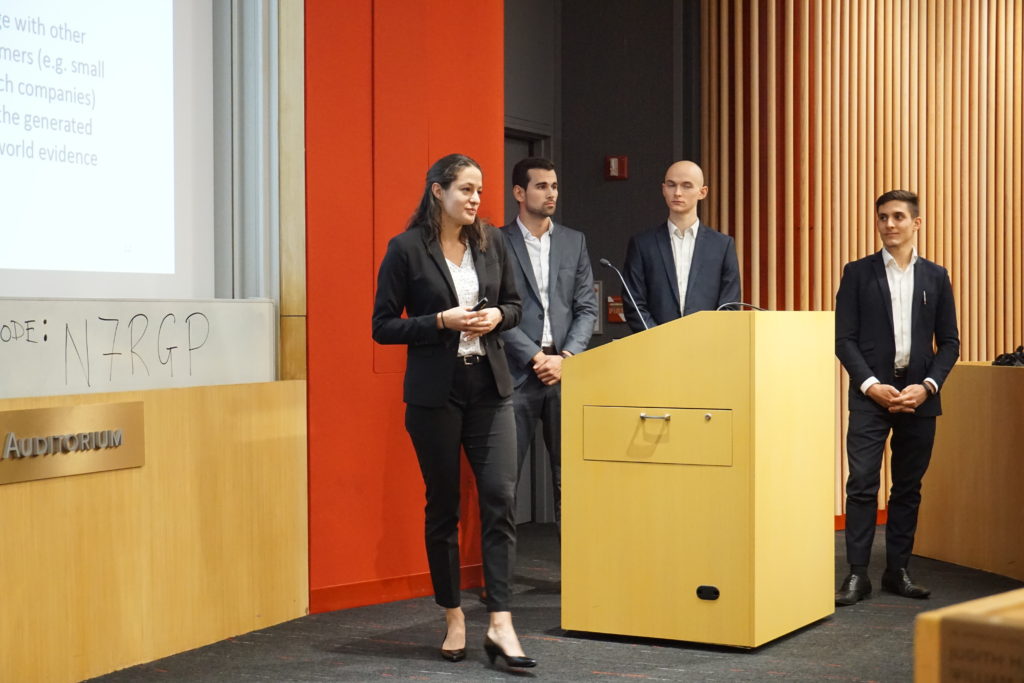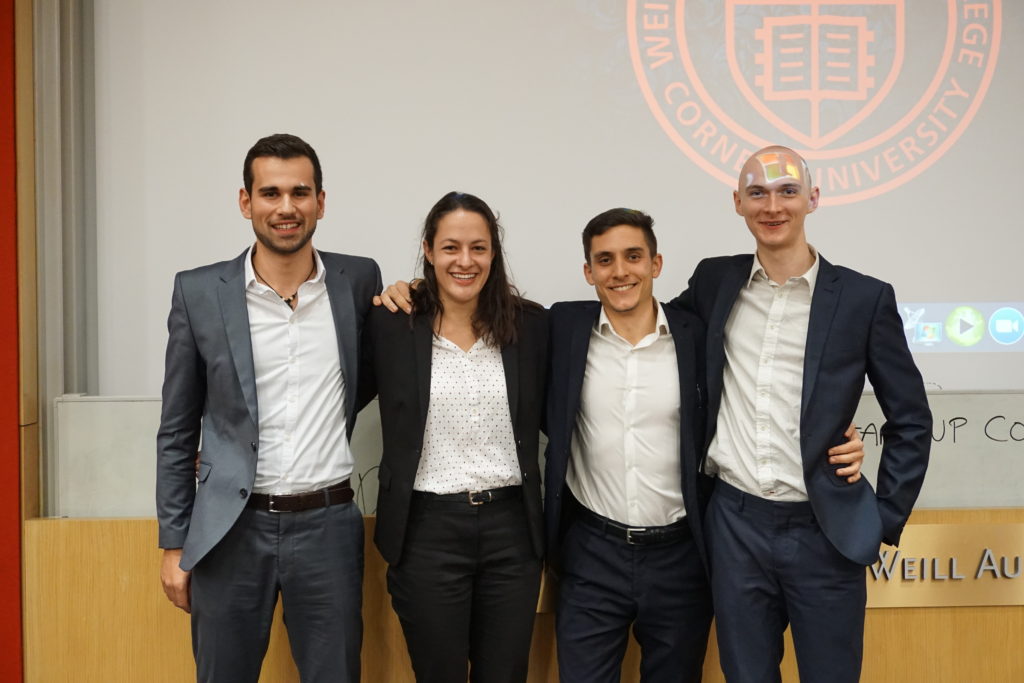It all started in April 2017, when four students from ETH Zurich and the University of Basel signed up for a Local Case Competition hosted by the Graduate Consulting Club at ETH Zurich. Case competitions take place all over the world and usually involve a quest to find a solution for a “real world” business or educational challenge.
Janine Daum, Matthew Rahtz, Sandro Berchier, and I (Angela Peter) formed Team Minerva and, although we had never met before, we became a great team.
Our goal was to win a trip to New York to participate in the Global Case Competition.
In December 2017, when it was finally time to fly to New York, unfortunately Janine was not able to join us. Lluc Rullan Sabater, a member of the runner-up team of the Local Case Competition took her place. For most of the team it was our first time in New York City, so we prolonged our stay to enjoy the city as tourists. On the day before the competition, Team Minerva convened for a team-building dinner and discussion of our strategy for the competition.
The day of the competition started early and being “typically Swiss” we were the first to arrive at the competition venue.
Overall, twelve teams from different universities participated. The schedule was tight allowing only three hours for solving the case – including the preparation of the slide deck.

Our “real-life” case challenge was to create a “go-to-market” strategy for a new and long-term in vivo imaging technique for lipids.
The organizing team provided us with a lot of additional background material, so we split up the reading. Lluc focused on the scientific part, Matthew checked the possible customers, Sandro dealt with the numbers, and I looked for any existing or upcoming competitors. The technology anticipates applications to aid research of three diseases – also opportunities for market entry: Lysosomal storage disorders (LSD), Non-alcoholic fatty liver disease (NAFLD), and Neurological disorders.
After some intense discussion, we decided as a team to target LSD to launch the technology even though the market size was much smaller than for NAFLD or Neurological disorders.
We based our decision on the fact that mainly large pharma companies are operating in the research area of LSD, whereas, for example, in the case of NAFLD, mostly smaller biotech companies were operating. Despite some initial doubts that we debated, everyone on our team backed our proposed strategy to pursue the big pharmaceutical companies that cover the market area for LSD. The incentive for the pharma companies to use the new technique is a lower cost and an increased reputation due to possibility to intensify research in LSD – a rare disease. In addition, the technique could be tested on a larger scale within NAFLD in the future, customer relationships could be expanded, and the technique could be promoted to other customers.
In the first round of presentations, each team presented in front of the jury and only four of the twelve teams made it to the final round. We started our round with a little trick, which was Sandro’s idea. We presented ourselves by shaking hands with each jury member. Afterwards, the introductions the presentation became the easy part. Luckily, the jury decided to send us on to the final round and the team was randomly selected to start the second round. Our presentation went well; we finished on time, which is always an issue at case competitions due the strict time limits, and we were able to convey our strategy in a way that everyone understood. However, the questions were tougher than in the first round and we had to deal with some questions that we just could not answer on the spot. For example, the jury asked the question, “Have you thought about customers other than in the pharmaceutical or biotech industry?” After our presentation, we waited and hoped for the best.
Finally, at 5 p.m., the jury announced Team Minerva as the winner of the Global Case Competition!
The winning team Minerva (from left to right): Sandro Berchier, Angela Peter, Lluc Rullan Sabater, Matthew Rahtz
We felt relieved, astonished, and completely exhausted. While case competitions are rather stressful, overall we were happy with the outcome. Of course, victory calls for celebration out on the town with the other participants, jury members, and the organizers.
The next day and before heading back to Switzerland or elsewhere, some of the Team Minerva members took time to stroll together through snowy New York City.
We would like to thank the following parties who contributed to this successful trip. The trip would have otherwise not been possible without the support of: ETH Global, who made the trip to New York possible and supported us financially; and the Graduate Consulting Club, ETH Zurich and University of Basel for organizing the Local Case Competition and coordinating the planning of the trip to New York.
By Angela Peter
All the members of Team Minerva, who took part at the Global Case Competition in New York, are (former) students of ETH Zurich. Lluc Rullan Sabater, who holds a MSc in Biotechnology from ETH Zurich and is now working in the consulting industry. Matthew Rahtz is currently working on a Master’s degree in Neural Systems and Computation, offered by ETH Zurich in cooperation with the University of Zurich. Sandro Berchier is a Master’s degree-seeking student in Robotics, Systems, and Control and part of the Excellence Scholarship & Opportunity Programme. Angela Peter, who is doing the Masters in Management, Technology, and Economics, also holds a BSc in Health Science and Technology from ETH Zurich.


